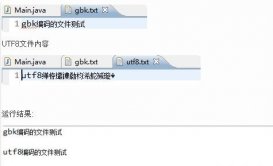一、概述
FreeMarker 是一個模板引擎,一個基于模板生成文本輸出的通用工具,使用純 Java 編寫,FreeMarker 被設計用來生成 HTML Web 頁面,特別是基于 MVC 模式的應用程序,雖然 FreeMarker 具有一些編程的能力,但通常由 Java 程序準備要顯示的數據,由FreeMarker 生成頁面,通過模板顯示準備的數據(如下圖)

FreeMarker 不是一個 Web 應用框架,而適合作為 Web 應用框架一個組件。FreeMarker 與容器無關,因為它并不知道 HTTP 或 Servlet;FreeMarker 同樣可以應用于非Web應用程序環境,FreeMarker 更適合作為 Model2 框架(如 Struts)的視圖組件,你也可以在模板中使用 JSP標記庫。另外,FreeMarker是免費的。
二、Freemarker的準備條件
freemarker.2.3.16.jar,下載地址這里就不貼了..(這個jar包其實在struts2里面)
三、Freemarker生成靜態頁面的原理
Freemarker 生成靜態頁面,首先需要使用自己定義的模板頁面,這個模板頁面可以是最最普通的html,也可以是嵌套freemarker中的 取值表達式, 標簽或者自定義標簽等等,然后后臺讀取這個模板頁面,解析其中的標簽完成相對應的操作, 然后采用鍵值對的方式傳遞參數替換模板中的的取值表達式,做完之后 根據配置的路徑生成一個新的html頁面, 以達到靜態化訪問的目的。
四、Freemarker提供的標簽
Freemarker提供了很多有用 常用的標簽,Freemarker標簽都是<#標簽名稱>這樣子命名的,${value} 表示輸出變量名的內容 ,具體如下:
1、list:該標簽主要是進行迭代服務器端傳遞過來的List集合,比如:
|
1
2
3
|
<#list nameList as names> ${names} </#list> |
name是list循環的時候取的一個循環變量,freemarker在解析list標簽的時候,等價于:
|
1
2
3
|
for (String names : nameList) { System.out.println(names); } |
2、if:該標簽主要是做if判斷用的,比如:
|
1
2
3
|
<#if (names=="陳靖仇")> 他的武器是: 十五~~ </#if> |
這個是條件判斷標簽,要注意的是條件等式必須用括號括起來, 等價于:
|
1
2
3
|
if(names.equals("陳靖仇")){ System.out.println("他的武器是: 十五~~"); } |
3、include:該標簽用于導入文件用的。
|
1
|
<#include "include.html"/> |
這個導入標簽非常好用,特別是頁面的重用。
另外在靜態文件中可以使用${} 獲取值,取值方式和el表達式一樣,非常方便。
下面舉個例子(static.html):
|
1
2
3
4
5
6
7
8
9
10
11
12
13
14
15
16
17
18
19
20
21
22
23
24
25
26
27
28
29
30
31
32
33
34
35
36
37
38
39
40
41
42
43
44
45
46
47
48
|
<!DOCTYPE html PUBLIC "-//W3C//DTD HTML 4.01 Transitional//EN" "http://www.w3.org/TR/html4/loose.dtd"> <html> <head> <meta http-equiv="Content-Type" content="text/html; charset=UTF-8"> <title>Insert title here</title> </head> <body> 描述:${description} <br/> 集合大小:${nameList?size} <br/> 迭代list集合: <br/> <#list nameList as names> 這是第${names_index+1}個人,叫做:<label style="color:red">${names}</label> if判斷: <br/> <#if (names=="陳靖仇")> 他的武器是: 十五~~ <#elseif (names=="宇文拓")> <#--注意這里沒有返回而是在最后面--> 他的武器是: 軒轅劍~· <#else> 她的絕招是:蠱毒~~ </#if> <br/> </#list> 迭代map集合: <br/> <#list weaponMap?keys as key> key--->${key}<br/> value----->${weaponMap[key]!("null")} <#-- fremarker 不支持null, 可以用! 來代替為空的值。 其實也可以給一個默認值 value-----${weaponMap[key]?default("null")} 還可以 在輸出前判斷是否為null <#if weaponMap[key]??></#if>都可以 --> <br/> </#list> include導入文件: <br/> <#include "include.html"/> </body> </html> |
實際代碼:
|
1
2
3
4
5
6
7
8
9
10
11
12
13
14
15
16
17
18
19
20
21
22
23
24
25
26
27
28
29
30
31
32
33
34
35
36
37
38
39
40
41
42
43
44
45
46
47
48
49
50
51
52
53
54
55
56
57
58
|
package com.chenghui.test; import java.io.File; import java.io.FileOutputStream; import java.io.IOException; import java.io.OutputStreamWriter; import java.io.Writer; import java.util.ArrayList; import java.util.HashMap; import java.util.List; import java.util.Map; import freemarker.template.Configuration; import freemarker.template.DefaultObjectWrapper; import freemarker.template.Template; import freemarker.template.TemplateException; public class CreateHtml { public static void main(String[] args) { try { //創建一個合適的Configration對象 Configuration configuration = new Configuration(); configuration.setDirectoryForTemplateLoading(new File("D:\\project\\webProject\\WebContent\\WEB-INF\\template")); configuration.setObjectWrapper(new DefaultObjectWrapper()); configuration.setDefaultEncoding("UTF-8"); //這個一定要設置,不然在生成的頁面中 會亂碼 //獲取或創建一個模版。 Template template = configuration.getTemplate("static.html"); Map<String, Object> paramMap = new HashMap<String, Object>(); paramMap.put("description", "我正在學習使用Freemarker生成靜態文件!"); List<String> nameList = new ArrayList<String>(); nameList.add("陳靖仇"); nameList.add("玉兒"); nameList.add("宇文拓"); paramMap.put("nameList", nameList); Map<String, Object> weaponMap = new HashMap<String, Object>(); weaponMap.put("first", "軒轅劍"); weaponMap.put("second", "崆峒印"); weaponMap.put("third", "女媧石"); weaponMap.put("fourth", "神農鼎"); weaponMap.put("fifth", "伏羲琴"); weaponMap.put("sixth", "昆侖鏡"); weaponMap.put("seventh", null); paramMap.put("weaponMap", weaponMap); Writer writer = new OutputStreamWriter(new FileOutputStream("success.html"),"UTF-8"); template.process(paramMap, writer); System.out.println("恭喜,生成成功~~"); } catch (IOException e) { e.printStackTrace(); } catch (TemplateException e) { e.printStackTrace(); } } } |
這樣子基本上可以算的上可以簡單的去做一點簡單的生成了,但是要在實際中去運用,還是差的很遠的,因為freemarker給的標簽完全滿足不了我們的需要,這時候就需要自定義標簽來完成我們的需求了。。
五、Freemarker自定義標簽
Freemarker自定義標簽就是自己寫標簽,然后自己解析,完全由自己來控制標簽的輸入輸出,極大的為程序員提供了很大的發揮空間。
基于步驟:
以前寫標簽需要在<后加# ,但是freemarker要識別自定義標簽需要在后面加上@,然后后面可以定義一些參數,當程序執行template.process(paramMap, out);,就會去解析整個頁面的所有的freemarker標簽。
自定義標簽 需要自定義一個類,然后實現TemplateDirectiveModel,重寫execute方法,完成獲取參數,根據參數do something等等。。
將自定義標簽與解析類綁定在一起需要在paramMap中放入該解析類的實例,存放的key與自定義標簽一致即可。。
注意:在自定義標簽中,如果標簽內什么也沒有,開始標簽和結束標簽絕對不能再同一行,不然會報錯
|
1
|
freemarker.log.JDK14LoggerFactory$JDK14Logger error |
我曾經上當過,這是freemarker 存在的bug。
下面是static.html的例子:
|
1
2
3
4
5
6
7
8
9
10
11
12
13
14
15
16
17
18
19
|
<!DOCTYPE html PUBLIC "-//W3C//DTD HTML 4.01 Transitional//EN" "http://www.w3.org/TR/html4/loose.dtd"> <html> <head> <meta http-equiv="Content-Type" content="text/html; charset=UTF-8"> <title>Insert title here</title> </head> <body> <#--自定義變量--> <#assign num='hehe'/> ${num} <br/> 自定義標簽 <@content name="chenghui" age="120"> ${output} ${append} </@content> </body> </html> |
下面是上面的static.html模板的解析類:
|
1
2
3
4
5
6
7
8
9
10
11
12
13
14
15
16
17
18
19
20
21
22
23
24
25
26
27
28
29
30
31
32
33
34
35
36
37
38
39
40
41
42
43
44
45
46
47
48
49
50
51
52
53
54
55
56
57
58
59
60
61
62
63
64
65
66
67
68
69
70
71
72
73
74
75
76
77
78
79
80
81
82
83
84
85
86
87
88
89
90
91
92
93
94
95
96
97
98
99
100
101
102
103
104
|
package com.chenghui.test; import static freemarker.template.ObjectWrapper.DEFAULT_WRAPPER; import java.io.IOException; import java.io.Writer; import java.util.Map; import freemarker.core.Environment; import freemarker.template.TemplateDirectiveBody; import freemarker.template.TemplateDirectiveModel; import freemarker.template.TemplateException; import freemarker.template.TemplateModel; import freemarker.template.TemplateModelException; import freemarker.template.TemplateNumberModel; import freemarker.template.TemplateScalarModel; /** * 自定義標簽解析類 * @author Administrator * */public class ContentDirective implements TemplateDirectiveModel{ private static final String PARAM_NAME = "name"; private static final String PARAM_AGE = "age"; @Override public void execute(Environment env, Map params,TemplateModel[] loopVars, TemplateDirectiveBody body) throws TemplateException, IOException { if(body==null){ throw new TemplateModelException("null body"); }else{ String name = getString(PARAM_NAME, params); Integer age = getInt(PARAM_AGE, params); //接收到參數之后可以根據做具體的操作,然后將數據再在頁面中顯示出來。 if(name!=null){ env.setVariable("output", DEFAULT_WRAPPER.wrap("從ContentDirective解析類中獲得的參數是:"+name+", ")); } if(age!=null){ env.setVariable("append", DEFAULT_WRAPPER.wrap("年齡:"+age)); } Writer out = env.getOut(); out.write("從這里輸出可以再頁面看到具體的內容,就像document.writer寫入操作一樣。<br/>"); body.render(out); /* 如果細心的話,會發現頁面上是顯示out.write()輸出的語句,然后再輸出output的內容, 可見 在body在解析的時候會先把參數放入env中,在頁面遇到對應的而來表單時的才會去取值 但是,如果該表單時不存在,就會報錯, 我覺得這里freemarker沒有做好,解析的時候更加會把錯誤暴露在頁面上。 可以這樣子彌補${output!"null"},始終感覺沒有el表達式那樣好。 */ } } /** * 獲取String類型的參數的值 * @param paramName * @param paramMap * @return * @throws TemplateModelException */ public static String getString(String paramName, Map<String, TemplateModel> paramMap) throws TemplateModelException{ TemplateModel model = paramMap.get(paramName); if(model == null){ return null; } if(model instanceof TemplateScalarModel){ return ((TemplateScalarModel)model).getAsString(); }else if (model instanceof TemplateNumberModel) { return ((TemplateNumberModel)model).getAsNumber().toString(); }else{ throw new TemplateModelException(paramName); } } /** * * 獲得int類型的參數 * @param paramName * @param paramMap * @return * @throws TemplateModelException */ public static Integer getInt(String paramName, Map<String, TemplateModel> paramMap) throws TemplateModelException{ TemplateModel model = paramMap.get(paramName); if(model==null){ return null; } if(model instanceof TemplateScalarModel){ String str = ((TemplateScalarModel)model).getAsString(); try { return Integer.valueOf(str); } catch (NumberFormatException e) { throw new TemplateModelException(paramName); } }else if(model instanceof TemplateNumberModel){ return ((TemplateNumberModel)model).getAsNumber().intValue(); }else{ throw new TemplateModelException(paramName); } } } |
然后再前面的實際代碼中加上:
|
1
2
|
//自定義標簽解析 paramMap.put("content", new ContentDirective()); |
這樣子基本上可以使用,freemarker完成自定義標簽了,解決一寫簡單的業務邏輯, 但是在實際的項目中不可能這樣子去做,因為還沒有和spring進行集成使用,每次都需要在解析的時候把解析類的實例放進去。。















